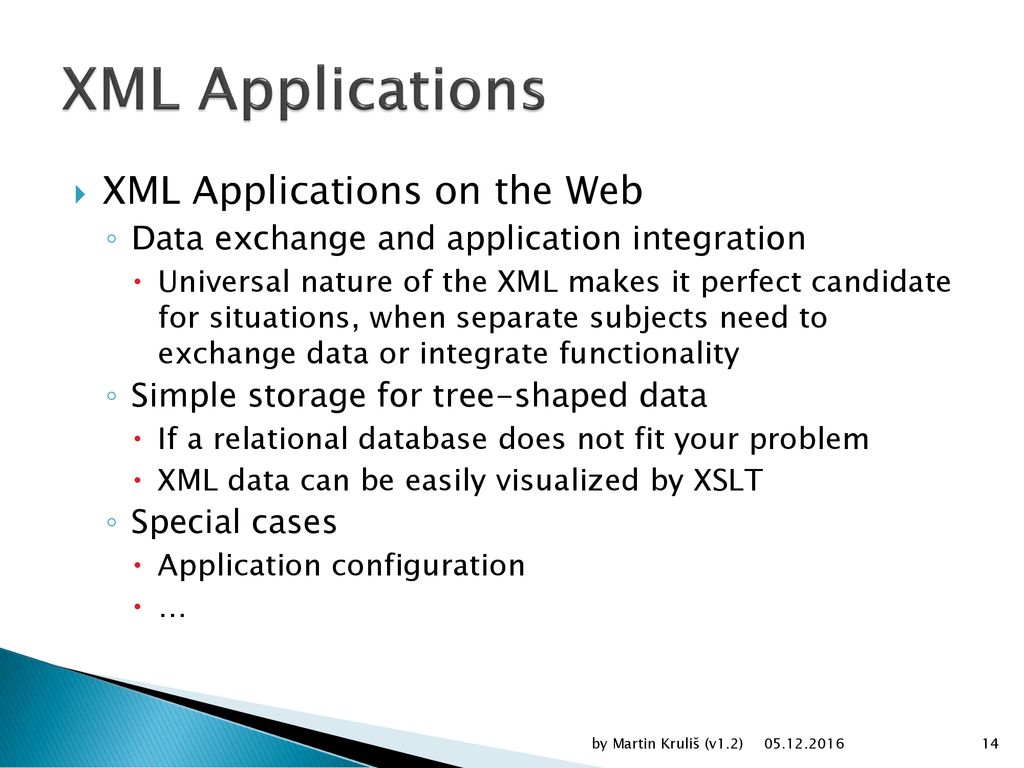The Enduring Role of XML in Web technology
Extensible Markup Language (XML) has been a cornerstone of web technology for decades, despite the rise of newer data formats like JSON. While JSON has become the dominant format for data exchange in many web applications, XML continues to play a vital role in specific domains and applications, offering unique strengths and capabilities. This article delves into the history, features, applications, and future of XML in the context of modern web development.
XML emerged in the late 1990s as a successor to Standard Generalized Markup Language (SGML). Its primary goal was to provide a flexible and extensible way to define custom markup languages for various data structures. The World Wide Web Consortium (W3C) standardized XML, making it a widely adopted technology for data representation and exchange.

The fundamental design principles of XML revolved around:
Extensibility: Users can define their own tags and structures, tailored to specific data needs.
XML’s strength lies in its ability to handle structured data with precision and clarity. Key features that have contributed to its longevity include:

Hierarchical Structure and Data Representation
XML’s tree-like structure allows for the representation of complex data relationships, making it ideal for documents with nested elements and attributes. This structure is particularly useful for representing:
Configuration files
Schema Definition and Validation
XML Schema Definition (XSD) and Document Type Definition (DTD) provide mechanisms for defining the structure and constraints of XML documents. This allows for:
Data validation, ensuring that documents conform to predefined rules.
Transformation and Querying
Technologies like XSLT (Extensible Stylesheet Language Transformations) and XPath (XML Path Language) enable:
Transforming XML documents into other formats, such as HTML or other XML structures.
Namespace Support
XML namespaces provide a way to avoid naming conflicts when combining elements and attributes from different XML vocabularies. This is crucial for:
Integrating data from multiple sources.
While JSON has largely replaced XML for client-side data exchange, XML continues to be used in various server-side and enterprise applications.
Web Services (SOAP)
Simple Object Access Protocol (SOAP) relies heavily on XML for message formatting and exchange. Although RESTful APIs are gaining popularity, SOAP-based web services remain prevalent in enterprise environments, particularly for:
Complex transactions
Configuration Files
Many applications and frameworks use XML for configuration files, leveraging its structured format and validation capabilities. Examples include:
Java configuration files (e.g., Spring configuration)
Document Formats
XML is the foundation for various document formats, including:
Office Open XML (OOXML) used by Microsoft Office
Data Exchange in Specific Industries
Several industries continue to rely on XML for data exchange due to its standardization and robustness:
Finance: XML-based standards like Financial Information eXchange (FIX) are used for trading and financial transactions.
JSON’s simplicity and lightweight nature have made it the preferred format for client-side data exchange in web applications. However, XML’s strengths in handling complex data structures and enforcing data integrity remain relevant.
The evolution of XML has seen the development of technologies that address some of its perceived limitations, such as:
XML 1.1: Introduced features to improve Unicode support and handle specific character encoding issues.
While JSON has gained significant traction, XML is not disappearing. Instead, it is finding its niche in applications where its strengths are essential.
Hybrid Approaches
Modern web applications often adopt hybrid approaches, using JSON for client-side data exchange and XML for server-side processing, configuration, and data storage.
Specialized Domains
XML will continue to be used in specialized domains where its features are critical, such as:
Enterprise applications requiring robust data validation and complex data models.
Data Interoperability
As data interoperability becomes increasingly important, XML’s ability to define custom data structures and ensure data integrity will remain valuable.
XML has played a pivotal role in the development of web technology, providing a flexible and extensible way to represent structured data. While JSON has emerged as the dominant format for client-side data exchange, XML continues to be relevant in specific domains and applications. Its strengths in handling complex data structures, enforcing data integrity, and providing schema definition and validation make it an indispensable tool for many developers.
The future of XML lies in its ability to adapt and evolve, finding its niche in applications where its unique features are essential. By adopting hybrid approaches and leveraging XML’s strengths in specialized domains, developers can continue to benefit from its enduring capabilities.



